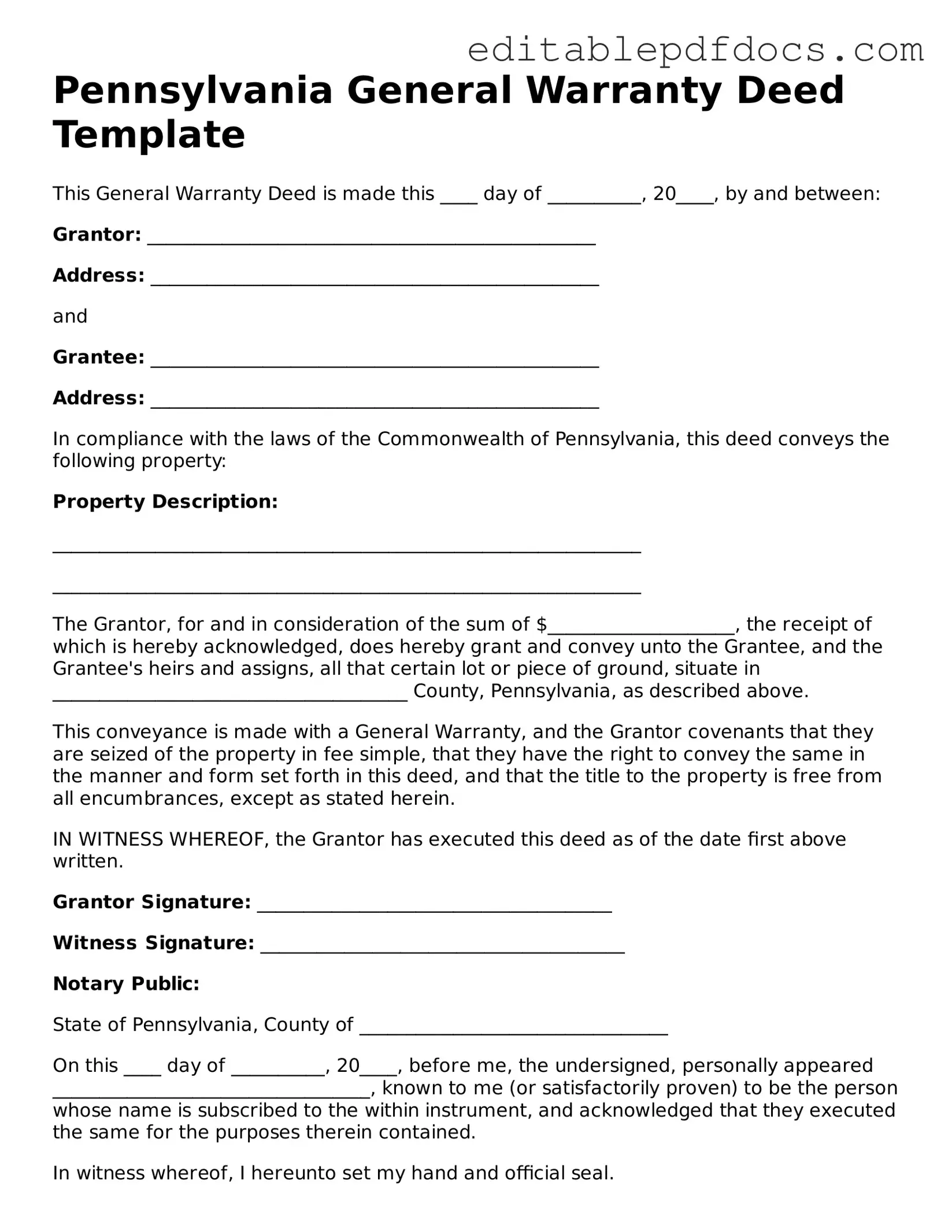When filling out the Pennsylvania Deed form, many individuals inadvertently make mistakes that can lead to complications in property transfer. One common error is not providing accurate names for all parties involved. This includes ensuring that the names match exactly as they appear on legal documents. If there are discrepancies, it could result in delays or even legal disputes later on.
Another frequent mistake is failing to include the correct property description. The deed must clearly identify the property being transferred, including its boundaries and any relevant details. A vague or incomplete description can lead to confusion and potential challenges to ownership.
Many people overlook the requirement for signatures. All grantors (those transferring the property) must sign the deed. In some cases, individuals may think that a single signature is sufficient, but if there are multiple owners, each must provide their signature to validate the document.
Not having the deed notarized is a significant error. Pennsylvania law requires that the deed be acknowledged before a notary public. This step is essential to ensure that the document is legally binding and can be recorded in the county's land records.
Another mistake is neglecting to indicate the consideration, or the value exchanged for the property. This is often stated in the form of a monetary amount, but if left blank or inaccurately filled out, it can lead to questions regarding the legitimacy of the transaction.
People sometimes forget to check for any liens or encumbrances on the property before completing the deed. If there are existing debts or claims against the property, these must be addressed before the transfer can be successfully completed. Ignoring this can lead to financial liabilities for the new owner.
Inaccurate or missing tax identification numbers can also create issues. Both the grantor and grantee should include their tax identification numbers to ensure that the transaction is properly recorded and that tax obligations are met.
Some individuals may not realize the importance of including the date of the transaction. This date is crucial for establishing the timeline of ownership and for any legal purposes that may arise in the future. Omitting this detail can complicate matters down the line.
Lastly, failing to review the completed deed for errors before submission is a common oversight. A thorough review can catch mistakes that may have been made during the filling process. A small error, such as a misspelled name or incorrect address, can have significant consequences.
By being mindful of these common pitfalls, individuals can help ensure that their Pennsylvania Deed form is filled out correctly and that the property transfer proceeds smoothly.
